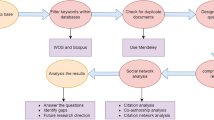Abstract
In multi-camera motion capture systems, determining the optimal camera configuration (camera positions and orientations) is still an unresolved problem. At present, configurations are primarily guided by a human operator’s intuition, which requires expertise and experience, especially with complex, cluttered scenes. In this paper, we propose a solution to automate camera placement for motion capture applications in order to assist a human operator. Our solution is based on the use of a guided genetic algorithm to optimize camera network placement with an appropriate number of cameras. In order to improve the performance of the genetic algorithm (GA), two techniques are described. The first is a distribution and estimation technique, which reduces the search space and generates camera positions for the initial GA population. The second technique is an error metric, which is integrated at GA evaluation level as an optimization function to evaluate the quality of the camera placement in a camera network. Simulation experiments show that our approach is more efficient than other approaches in terms of computation time and quality of the final camera network.











Similar content being viewed by others
References
Aissaoui A, Baarir Z, Ouafi A, Pudlo P, Taleb-Ahmed A, Gillet C, Deraz F (2014) Optimisation technique of camera placement for motion capture simulations. Comput Methods Biomech Biomed Eng 17(sup1):122–123
Al Hasan M, Ramachandran KK, Mitchell JE (2008) Optimal placement of stereo sensors. Opt Lett 2(1):99–111
Angeline PJ (1995) Adaptive and self-adaptive evolutionary computations. In: Palaniswami M, Attikiouzel Y (eds) Computational intelligence: a dynamic systems perspective. IEEE Press, New York, pp 152–163
Bao S, Jiang R, Kwan W, Wang B, Ma X, Song Y-Q (2011) Evaluation of next-generation sequencing software in mapping and assembly. J Hum Genet 56(6):406–414
Chen X, Davis J (2008) An occlusion metric for selecting robust camera configurations. Mach Vis Appl 19(4):217–222
Chvatal V (1975) A combinatorial theorem in plane geometry. J Comb Theory Ser B 18(1):39–41
Ercan AO, Yang DB, El Gamal A, Guibas LJ (2006) Optimal placement and selection of camera network nodes for target localization. In: International conference on distributed computing in sensor systems. Springer, pp 389–404
Goldberg DE, Holland JH (1988) Genetic algorithms and machine learning. Mach Learn 3(2):95–99
Gonzalez-Barbosa J-J, García-Ramírez T, Salas J, Hurtado-Ramos J-B, Rico-Jiménez J-D-J (2009) Optimal camera placement for total coverage. In: Proceedings of the 2009 IEEE international conference on robotics and automation. IEEE Press, pp 3672–3676
Hörster E, Lienhart R (2006) On the optimal placement of multiple visual sensors. In: Proceedings of the 4th ACM international workshop on video surveillance and sensor networks. ACM, pp 111–120
Indu S, Chaudhury S, Mittal NR, Bhattacharyya A (2009) Optimal sensor placement for surveillance of large spaces. In: ICDSC 2009. 3rd ACM/IEEE international conference on distributed smart cameras. IEEE, pp 1–8
Katz I, Aghajan H, Haymaker J (2010) A process for sensor configuration in multi-camera networks. In: Proc. 4th ACM/IEEE int. conf. distributed smart cameras
Kita H (2001) A comparison study of self-adaptation in evolution strategies and real-coded genetic algorithms. Evol Comput 9(2):223–241
Lee D, Lin A (1986) Computational complexity of art gallery problems. IEEE Trans Inf Theory 32(2):276–282
Lee MW, Jung CH, Lee MG, Brutzman D (2015) Data definition of 3D character modeling and animation using H-Anim. J Converg 6(2):19–29
Malik R, Bajcsy P (2008) Automated placement of multiple stereo cameras. In: The 8th workshop on omnidirectional vision, camera networks and non-classical cameras-OMNIVIS
MathWorks (1994) Matlab r2015a. https://www.mathworks.com/products/matlab.html. Accessed 27 Dec 2016
Mitchell M (1998) An introduction to genetic algorithms. MIT Press, Cambridge
Mittal A, Davis LS (2008) A general method for sensor planning in multi-sensor systems: extension to random occlusion. Int J Comput Vis 76(1):31–52
Morsly Y, Aouf N, Djouadi MS, Richardson M (2012) Particle swarm optimization inspired probability algorithm for optimal camera network placement. IEEE Sens J 12(5):1402–1412
Olague G, Mohr R (2002) Optimal camera placement for accurate reconstruction. Pattern Recogn 35(4):927–944
O’rourke J (1987) Art gallery theorems and algorithms, vol 57. Oxford University Press, Oxford
Piciarelli C, Micheloni C, Foresti GL (2010) Occlusion-aware multiple camera reconfiguration. In: Proceedings of the 4th ACM/IEEE international conference on distributed smart cameras. ACM, pp 88–94
Rahimian P, Kearney JK (2015) Optimal camera placement for motion capture systems in the presence of dynamic occlusion. In: Proceedings of the 21st ACM symposium on virtual reality software and technology. ACM, pp 129–138
Srinivas M, Patnaik LM (1994) Adaptive probabilities of crossover and mutation in genetic algorithms. IEEE Trans Syst Man Cybern Part B (Cybern) 24(4):656–667
Szeliski R (2010) Computer vision: algorithms and applications. Springer Science & Business Media, Berlin
Xu Z, Zhang J, Zhang Y (2003) Bionics in computational intelligence: theory and algorithm. Science Press, Beijing
Yao Y, Chen C-H, Abidi B, Page D, Koschan A, Abidi M (2010) Can you see me now? sensor positioning for automated and persistent surveillance. IEEE Trans Syst Man Cybern Part B (Cybern) 40(1):101–115
Zhao J, Cheung S-C, Nguyen T (2008) Optimal camera network configurations for visual tagging. IEEE J Sel Top Sig Process 2(4):464–479
Zhao J, Cheung S, Nguyen T (2009) Optimal visual sensor network configuration. Multi-camera networks: principles and applications, Academic Press, New York, NY, USA, pp 139–162
Acknowledgements
This research was supported by the Franco-Algerian cooperation programme PHC TASSILI (12MDU876) Grants. Entitled “Assistant System to the Cameras Location in the MOCAP”, the Project gathers members of Automatic Control and Human–Machine Systems of LAMIH Laboratory-Valenciennes University-France, and AISEL Laboratory-Biskra University-Algerie.
Author information
Authors and Affiliations
Corresponding author
Rights and permissions
About this article
Cite this article
Aissaoui, A., Ouafi, A., Pudlo, P. et al. Designing a camera placement assistance system for human motion capture based on a guided genetic algorithm. Virtual Reality 22, 13–23 (2018). https://doi.org/10.1007/s10055-017-0310-7
Received:
Accepted:
Published:
Issue Date:
DOI: https://doi.org/10.1007/s10055-017-0310-7




